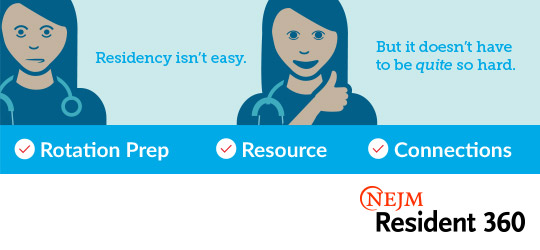October 7th, 2020
“We Did Everything We Could.”
Vivek Sant, MD

Dr. Sant is a General Surgery Chief Resident at NYU Langone Health, Bellevue Hospital, and Manhattan VA in New York, NY.
Can we do better when delivering bad news in trauma?
On a recent trauma call, we had a busy night, culminating in a horrific motorcycle trauma that came in early in the morning. The patient had devastating injuries and ended up dying. The detectives finally tracked down the patient’s family. I cleaned myself up, put on my white coat, and had the family sit down in a private conference room. I entered with my trauma attending and a consulting specialist and we sat down with them. I told them their loved one had been involved in a terrible accident, and asked them what they knew so far. I filled them in on the rest of the situation, explaining that we’d done a lot of work to try to save him, but the injuries had been too much, and he had died. We spent as much time as we could answering their questions and being with them as they processed the horrible news, and finally took them to see him. Naturally, they were devastated; I will never forget the wail of sorrow from his widow. While I have delivered bad news before, this experience felt different and far more difficult, emotionally.
The SPIKES methodology
Delivering bad news to patients is difficult; but with a methodology and practice, it can be made less difficult. The SPIKES methodology was developed by physicians at the MD Anderson Cancer Center in Houston (Oncologist 2000; 5:302), for delivering bad news to oncology patients. Optimizing the following parameters helped improve their patients’ experience:
- Setting – ensure a private, quiet place; sit down, invite other family members, avoid external interruptions
- Perception – assess the patient’s baseline understanding of the situation before diving into an explanation
- Invitation – provide initial information and offer the option of hearing further details
- Knowledge – warn that bad news is coming, give information in small chunks, and avoid jargon
- Empathy – address the emotional response with empathy
- Strategy – summarize concrete next steps
 In retrospect, we had addressed most of these issues as recommended. However, unlike the oncology setting in which this framework was created, or even the surgical context I am used to, the emergent trauma setting presented several unique challenges:
In retrospect, we had addressed most of these issues as recommended. However, unlike the oncology setting in which this framework was created, or even the surgical context I am used to, the emergent trauma setting presented several unique challenges:
- No previously established rapport – in trauma, providers do not have an earlier visit to establish a bond with the patient or their family; in contrast, rapport in oncology is built over time, and a connection is formed with patients preoperatively, prior to elective surgery.
- Traumatic injury is unexpected – a family member’s death is rarely on the family’s radar since trauma is unexpected. In oncology, patients have been considering their own mortality, and in elective surgery, families know their loved ones are being hospitalized for an operation.
- Patients are younger – trauma patients often are younger, where the loss is more unexpected and perceived to be more unfair.
- Fewer resources for grief support – traumas often present on nights and weekends, when the hospital is not as fully staffed with chaplains, social workers, and grief counselors who would otherwise be instrumental in supporting the bereaved family.
- No control of the narrative – various professionals work together to identify and contact family of trauma patients; they may not have training in delivering bad news or accurate updates on the patient’s status. So families sometimes arrive at the hospital without the appropriate foreshadowing of the complete situation and are shocked by the news.
We might feel discouraged that some of these aspects are immutable. We can’t control trauma patient demographics nor the unexpected nature of trauma. However, with training and funding, we can better steer the narrative and improve resourcing. And on an individual level, we can soften the blow through a deeper understanding of the specific nature of their pain (“No one should die so young”) when talking with families.
Resilience in the face of delivering bad news
Delivering bad news is tough. Delivering bad news in trauma is tougher still. And this takes a toll on healthcare providers as well. Thirty minutes after we talked to our patient’s family, wails of sorrow still ringing in our ears, we headed to the OR to take out another patient’s appendix. New patient, fresh game face, another battle to fight — with the same sense of purpose and urgency.
What strategies do you use for delivering bad news in the emergent trauma setting?



I appreciate your article and the perspective.
I am a PCP with a small patient base ( by choice). One of my strengths is building rapport with patients.
I would encourage anyone in this situation to pull a chair up to the family ( do not be behind a desk/table). Maintain eye contact- speak slowly and clearly. Do not sugar coat but be empathetic. I believe tears are ok if they are authentic. It is not so much what you say but how you say it.
After you deliver the “ news “ the family hears little to nothing. A nice gesture would be to get the families cell number or if appropriate share yours. Circle back in a day or so, with their permission. They may have questions they didn’t think of given the “ shock” in the moment.
This compassionate approach will not only help the family heal, but it will also help you; after all , we are all human.
Thank you for your reply Dr. Quibell. Appreciate your thoughts on compassion and empathy and especially re: circling back later with the family – for both the benefit of patients’ families and us providers!
Thanks Diane for that feedback. It demonstrates genuine empathy.
As a palliative care researcher and from teaching students over the years, I have come to appreciate that models like SPIKES add a mechanical tone to an important conversation, generates anxiety in clinicians at the expense of other key ingredients of good communication empathic listening, authentic concern for patients and families. I am a proponent of “general principles” such as exploring, clarifying, empathic listening/responding, naming an emotion, and aligning with patients and family and therapeutic use of silence.
Dr. Meghani, your point is well taken – I love hearing experts try to explain how they are successful at what they do – sometimes too many details get in the way of understanding the basic principles. For me, I have found the detailed SPIKES model helps me remember a few “touchups” to the approach that comes naturally to me.
I have been an emergency physician for many years. I’ve had to be involved in these scenarios very often. What has been helpful to me is to bring the head ER nurse with you or some other person who could remain with the family a little bit longer than you can in order to let them talk out certain things or speak longer. As often times especially if you’re a sole provider you have to go back into the emergency room. When the family is ready they can then go see the patient. I always allow them to stay as long as they want to with the body. We often try to bring them coffee and if it’s available some small refreshment and allow them to stay in a room we may designate as a “grieving” room so they can stay there as possibly other family members arrive. If the chaplain is available we also called him/her to possibly sit with the family. It is difficult to do this alone. In addition, often in these kind of circumstances you or the head nurse has to Speak with the patient ‘s family about possible organ donation which is another difficult discussion. These are not easy conversations, however it is very important that you try to do it skillfully as it can help me to mitigate some Emotional trauma in the families. Janet magnani MDMPH
Dr. Magnani, thank you for your comment. Utilizing the resources and skills of nurses, chaplains and other trained staff seems not only helpful for the provider but a nice way to help the family feel supported as well.
Insightful to learn about the SPIKES methodology. Seems like a very deliberate way of ensuring that the unfortunate news is communicated appropriately and respectfully. Would be interesting to hear about the other side of this and how physicians cope with the grief of losing patients (you tee it up at the end there). Enjoy reading your pieces – thanks for sharing!
Thanks for reading Pranali! Yes – the physician side of this re: burnout, decompressing, coping, and resiliency is a whole area of discussion unto itself. Will hopefully have the chance to share my thoughts on it in a future blog post!